CSIRAC (COMMONWEALTH SCIENTIFIC AND INDUSTRIAL RESEARCH ORGANISATION AUTOMATIC COMPUTER)
MELBOURNE MUSEUM - 11 NICHOLSON STREET CARLTON, MELBOURNE CITY
-
Add to tour
You must log in to do that.
-
Share
-
Shortlist place
You must log in to do that.
- Download report


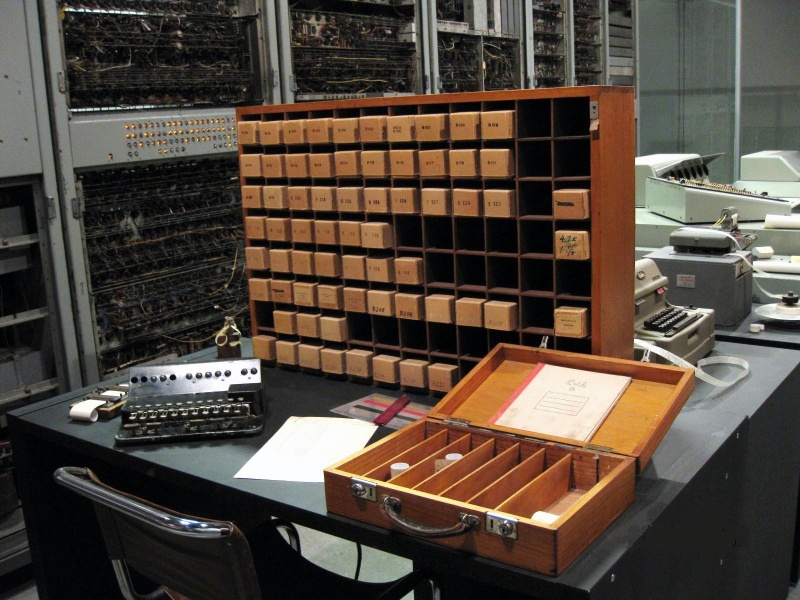
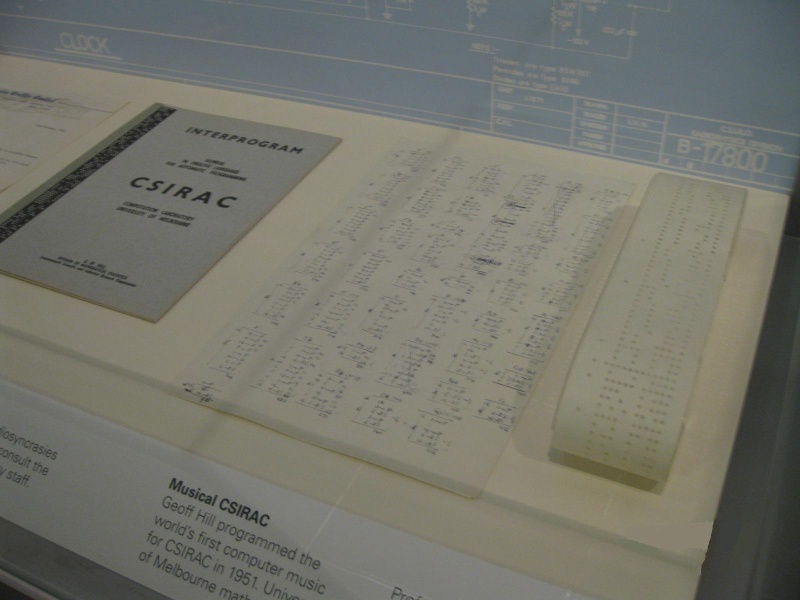
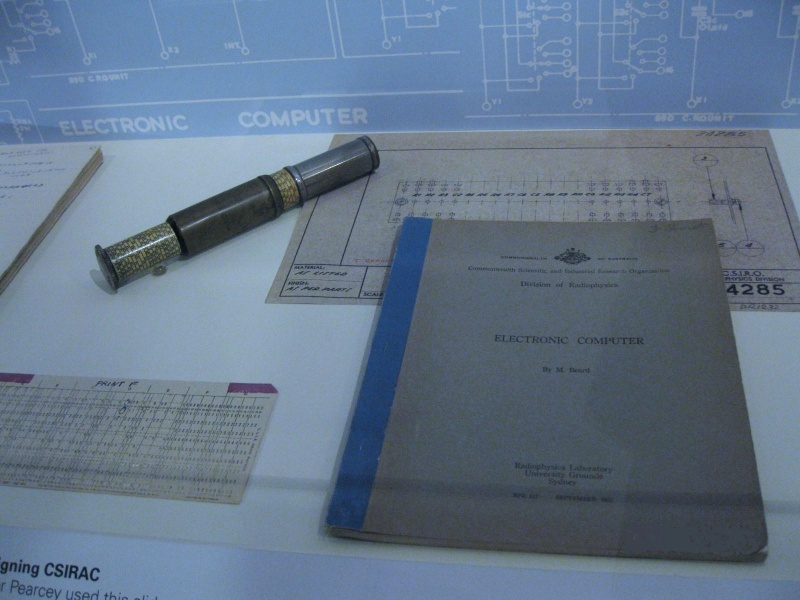
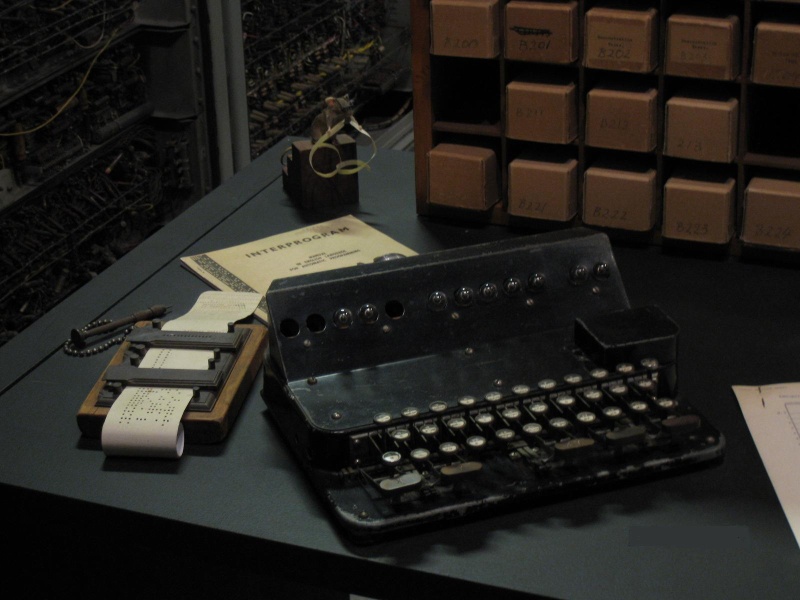
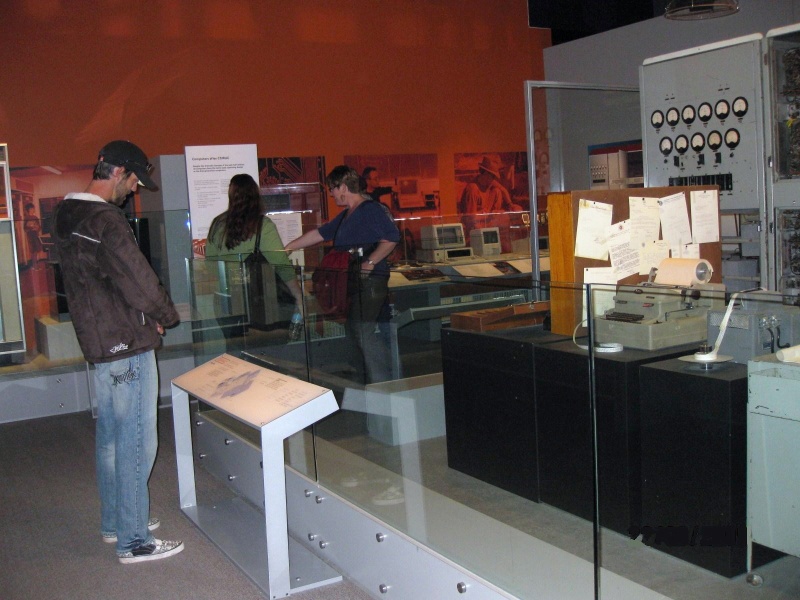
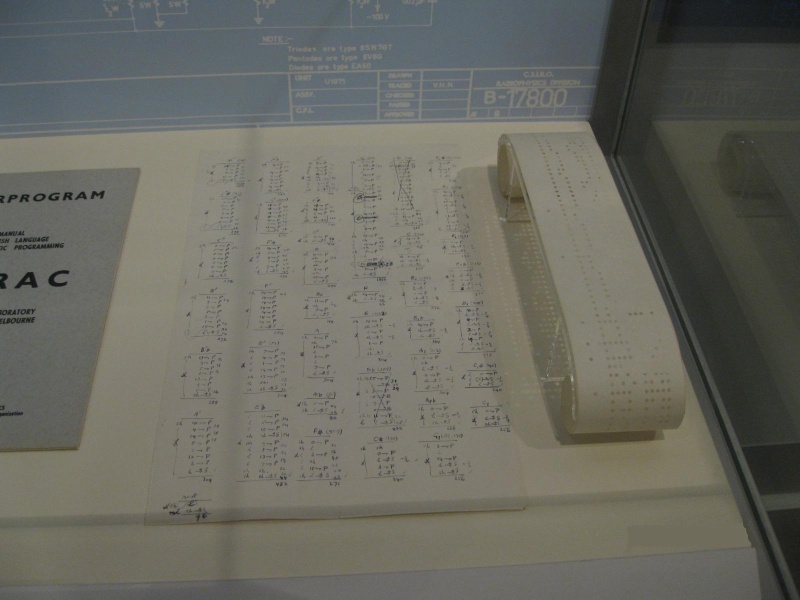
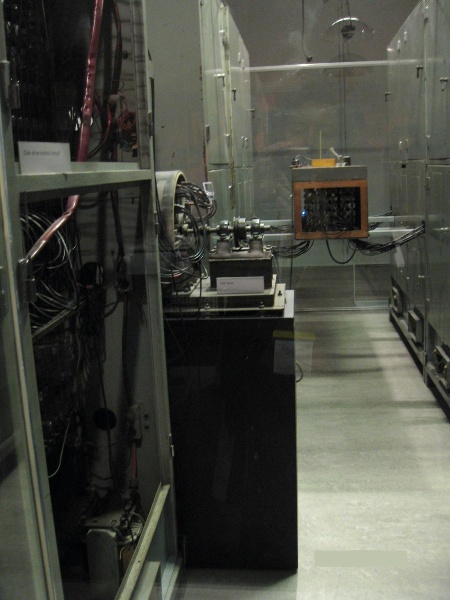
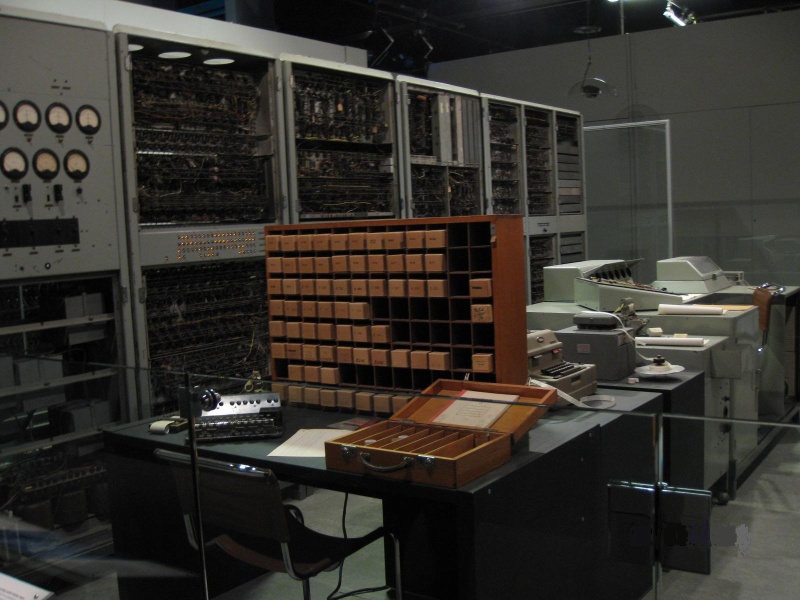
Statement of Significance
What is significant?
CSIRAC (Commonwealth Scientific and Industrial Research Organisation Computer), is Australia's first programmable digital computer and the only surviving intact first generation computer in the world. Many of the founders of the Australian computer software industry were trained on CSIRAC. Designed and built by Trevor Pearcey and Maston Beard between 1947 and 1949, CSIRAC was the first computer to be used in an Australian university, the first in Victoria and the first in the world to play music. CSIRAC is a serial machine which comprises nine metal cabinets located in two rows (five in the front and four in the back), hard disk drive (which occupies a cabinet in the back row), a control console, input and output devices, racks, printer, storage delay lines, an off-line paper tape editing area, paper tape readers and punches.
The associated Software Library includes original paper tapes that were used to program the computer. This is Australia's oldest software library and almost certainly the oldest in the world. The Software Library for CSIRAC comprises punched paper tapes, in boxes, placed in order within a set of purpose-built pigeon holes. These tapes store subprograms (sometimes called subroutines) which instructed the computer to perform specific calculations or tasks. The Software Library includes music tapes, which are the first to generate music in the world. The tapes are the only existing record of such programs from any first generation computer.
Developed by the CSIR (Council of Scientific and Industrial Research, later renamed CSIRO, Commonwealth Scientific and Industrial Research Organisation) at its Radiophysics Laboratory in Sydney, the computer was originally named CSR MK 1. The first program was run in November 1949 and full operation began in 1951. CSIRAC was the fourth computer in the world to have a 'stored program', which allowed computer programs and data to be accessed instantaneously, (it was preceded by: the "Baby", Manchester, UK, 21 June 1948, the "EDSAC", Cambridge, UK, 6 May 1949 and the "BINAC", Philadelphia, USA, August 1949). CSIRAC was a major Australian technological achievement operating more than 500 times faster that the best mechanical calculators of the time. The computer's capabilities were further developed and it was used to solve a wide range of mathematical problems. Following a change of focus by CSIRO, the computer was relocated to the University of Melbourne in 1955 where it was officially renamed, CSIRAC and was instrumental in the establishment of one of the earliest Computer Science departments in the world.
From 1956-1964 CSIRAC provided a computing service for science and industry, operating for approximately 30,000 hours and undertaking around 700 projects which included: the first electronically computed 24 hour weather forecast in Australia; providing calculations for the Victorian Forestry Commission and the Victorian State Electricity Commission; building design; psychological research; and University staff loan repayments. Decommissioned in 1964, CSIRAC was donated by the University of Melbourne to the Museum of Victoria (now Museum Victoria) where it has been on display since 2000.
How is it significant?
CSIRAC is of historical and scientific (technological) significance to the State of Victoria.
Why is it significant?
CSIRAC is of scientific (technological) significance as it is the first automatic electronic stored-program computer in Australia and one of the first in the world. It is considered to be one of Australia's foremost technological achievements. Many of the founders of Australia's computer software industry were trained on CSIRAC.
CSIRAC is of historical significance as it is the first Australian programmable digital computer and one of the first in the world. CSIRAC is the only intact first generation stored-program computer still in existence in the world. It was the first computer to be used in Victoria, the first to play music and the first to be used in an Australian university. Its arrival at the University of Melbourne enabled the establishment of one of the earliest Computer Science departments in the world.
The existence of the Software Library adds to the significance of CSIRAC. Without the software a computer is merely an assemblage of electronic and mechanical devices. The fundamental characteristic of a stored program computer is the ability to perform different functions according to the instructions (the software) loaded into the machine. CSIRAC's significance is further enhanced due to its fully documented provenance. A number of scholarly publications have been produced on the history of CSIRAC and its importance as Australia's first computer.
-
-
CSIRAC (COMMONWEALTH SCIENTIFIC AND INDUSTRIAL RESEARCH ORGANISATION AUTOMATIC COMPUTER) - History
HISTORY:
The Evolution of the Digital Computer
The first calculating machine was constructed by Pascal in 1642 and was used to carry out tax computations in France. The first machine to undertake a sequence of operations was the difference engine, designed by Charles Babbage in 1822. In 1889, Hollerith developed a punch card machine which was used for data sorting in the American census.
The large scale digital computer was first conceived by Charles Babbage in 1833. Although Babbage considered the development of the Analytical Engine it was not completed. In 1937, Howard Aitken of Harvard University commenced the construction of the mechanical computer with the assistance of the International Business Machine Company. This machine, called the Automatic Sequence Controlled Calculator Mk was completed in 1944.
The first electronic computer was developed to compute ballistic tables during the Second World War and was sponsored by the United States War Department. This special purpose computer was named the ENIAC (Electronic Numerical Integrator and Calculator) and was designed by Eckert and Mauchley at the Moore School of Engineering in Philadelphia.
The general purpose computer known as the EDVAC (the Electronic Discrete Variable Automatic Computer) was commenced in 1945. Two machines were also developed in England, the first was built at Cambridge (1946-49) and was called EDSAC (Electronic Delayed Storage Automatic Computer) and the second machine called ACE (Automatic Computing Engine) was constructed at the national Physical Laboratory, London and was completed in 1950. (Hirst, F., n.d., pp.2-4)
The Development of the First Australian Computer
In 1947, Maston Beard and Trevor Pearcey led a research group at the Sydney-based Radiophysics Laboratory of the Council for Scientific and Industrial Research (now known as the CSIRO) to design and build an electronic computer. In 1948, Pearcey and Beard commenced the design of a stored program electronic computer. The CSIR Mk 1, as it was known, was developed along side but largely independently of, work then underway in the United Kingdom and the USA. The CSR Mk 1 ran its first program in November 1949, the precise date is not recorded, (McCann and Thorne, 2000, p.3). It was the fourth, or fifth stored program electronic computer in the world and the first outside the United Kingdom and the USA.
Many of the CSIR Mk 1 features were novel at the time and operated more than 1000 times faster than the best mechanical calculators of the time. The machine was officially launched in 1951 and was used to solve problems both for the Radiophysics Laboratory and outside organisations. It was decommissioned in 1955 and transferred to Melbourne.
In 1954, after a change of focus the CSIRO proposed to transfer the CSIR Mk 1 to the University of Melbourne although it was not until 1956 that the computer was finally accepted by the University. On 14 June 1956, the Melbourne Computing Laboratory was officially opened by the Chairman of the CSIRO Sir Ian Clunies-Ross and the CSR Mk 1 was formally recommissioned and named CSIRAC, (McCann and Thorne, 2000, p.4). CSIRAC was used for University research, by the CSIRO and government departments. According to Frank Hirst who managed the operations, between June 1946 and June 1968 CSIRAC operated for 30,000 hours during which time over 700 computing projects were processed, ((McCann and Thorne, 2000, p.40). It was de-commissioned on 24 November 1964, when it was replaced by an IBM 7074/1401 combination and was then donated by the University of Melbourne to the Museum of Victoria (now Museum Victoria). Between 1964 and 2000 CSIRAC was kept in storage and then loaned to the Chisholm Institute of Technology for display. The CSIRAC History Team (Ron Bowles, Judith Hughes, Doug McCann, Jurijj Semkiw, John Spencer and Peter Thorne), was developed in the mid 1990s and was based at the University of Melbourne. The Team acquired documentation and personal stories relating to CSIRAC's history. This archive was donated to Museum Victoria. The CSIRAC History Team also played an important role in developing and maintaining the 2000 CSIRAC exhibition at Melbourne Museum and the development of the Museum Victoria CSIRAC website.
CSIRAC Chronology
The CSIRAC Chronology outlined below is available on-line at the University of Melbourne, Department of Computer Science and Software Engineering, CSIRAC web pages: http://ww.csse.unimelb.edu.au/dept/about/csirac. A more detailed time line on the history of CSIRAC is available in McCann and Thorne's, 2000, The Last of the First CSIRAC: Australia's First Computer, pp.6.
1945 - Trevor Pearcey sees Howard Aiken's Mk1 (or Automatic Sequence Controlled Calculator) at Harvard, and decides that paper tape-based systems are too slow, and that a fully electronic design would be superior.
1946 - Trevor Pearcey begins to formulate the logical planning for an "Automatic Computer".
1946 - Chief of Radiophysics Edward Bowen and Assistant Chief Joseph Pawsey decided on radioastronomy and rain-physics as the two main areas of research, with a third, radio propagation dropped in favour of the development of electronic computing.
1948 - Construction of the Mk1 computer begins with Maston Beard in charge of engineering and Trevor Pearcey covering the logical design.
1949 - First test program is run in late November - a long multiplication routine.
1951 - Brian Cooper constructs a drum-based secondary storage unit, and begins to construct a larger drum-based device with greater capacity.
1951 - The Mk1 is publicly demonstrated.
1951 - Music first played on the Mk1.
1953 - Reginald Ryan doubles the Mk1's mercury delay line storage capacity to 1024 words.
1955 - Maston Beard designs a disk-type secondary storage unit, abandoning Brian Cooper's second drum-type design.
1954 - Maston Beard with the assistance of Geoff Chandler completely redesigns the main memory circuits which were designated MKII.
1955 - The Mk1 is dismantled for shipment to Melbourne.
1956 - June 14. The Computation Laboratory is opened at the University of Melbourne and the machine is renamed "CSIRAC".
1964 - CSIRAC is decommissioned and donated to the Museum of Victoria. It is replaced by an IBM 7044.
1980's - CSIRAC is removed from storage and placed on display at Caulfield (later Chisholm) Institute of Technology, now Monash University - Caulfield campus.
1992 - CSIRAC is returned to storage in the Museum of Victoria.
1996 - In June the machine is placed on display at the University of Melbourne, as part of the 40th Anniversary Celebration of CSIRAC arriving in Melbourne.
1996 - In December, CSIRAC is placed back into storage at the Scienceworks Museum, Spotswood.
2001 - CSIRAC is on display at the Melbourne Museum, (11 Nicholson Street), Carlton Gardens, Melbourne.
In 2004, CSIRAC display was relocated to the Science and Life Gallery at the Melbourne Museum.
CSIRAC and its association with the University of Melbourne
CSIRAC was the first computer in an Australian university and its arrival at the University of Melbourne in 1955 resulted in the establishment of the Computation Laboratory which later evolved into an academic department, the Department of Computer Science, and a computer service department called Information Technology Services. As the result of the arrival of CSIRAC in the 1950s the University of Melbourne has one of the longest established Computer Science Departments in the world, (McCann, and Thorne, 2000, pp. 24-25).
At the University of Melbourne Computation Laboratory CSIRAC served as a free computing service under the joint authority of Professor Thomas Cherry, Professor Sir Leslie Martin and Dr Frank Hirst. Until 1964, CSIRAC provided a computing service to scientists, engineers, members of the Melbourne business community and programmers. Computer programming courses were also offered and many founders of Australia's computer software industry were trained on CSIRAC (Museum Victoria CSIRAC Website). Like all first generation computers CSIRAC had its own unique design and programs had to be developed from scratch. (McCann and Thorne, 2000, p.25)
CSIRAC and its uses
While located in Sydney, the CSIR Mk 1 was used to analyse flood data for the Snowy Mountains Hydroelectric Authority (SMHA) and to study road and air traffic congestion. (Museum Victoria CSIRAC Infosheet, 2007)
CSIRAC was used in a large number of major Australian engineering projects during the 1950s and 1960s. While at the Melbourne Computation Laboratory, CSIRAC processed over 700 computing projects which included*:
- Simulations of the practical operation of the Victorian power supply system by the SECV (State Electricity Commission of Victoria).
- Pattern simulations for the arrangement of atoms in face-centred cubic crystals (eg: tungsten and platinum).
- Evaluation of the growth rate of a stand of Pinus Radiata for the Forestry Commission of Victoria.
- Production of Solar Position and Radiation Tables for Australian capital cities for the CSIRO Division of Building Research.
- Calculation of the loan repayment schedule for University staff member's housing loans.
- Computation of the radiation patterns of the rhombic antennae used by the Army Signals Branch at Donnybrook.
- Rigid-frame and grid-frame analysis for many of the 'high'-rise buildings (to around 25 stories) built in Australia in the early 1960s.
(*Source: Melbourne School of Engineering and Computer Science CSIRAC website: http://www.csse.unimelb.edu.au/dept/about/csirac/uses.html
CSIRAC and music
In 2004, Paul Doornbusch, composer and sonologist confirmed that CSIR Mk 1 was the first computer to play music and this occurred in 1950. The computer's first public performances of "Colonel Bogey", took place during the inaugural Conference of Automatic Computing Machines in Sydney, 7-9 August, 1951.Geoff Hill was the first software engineer to work with CSIR Mk 1 and was responsible for programming it to play contemporary musical melodies including: 'Colonel Bogey', 'Bonnie Banks', 'Girl with Flaxen Hair'. As there was no storage available the music was produced in real-time. Following its move to Melbourne mathematics Professor Thomas Cherry (later Sir Thomas Cherry) also programmed CSIRAC to play music and the way in which it was programmed was altered and refined during this time. In 1957, Professor Cherry developed a music programming system that enabled anyone with an understanding of musical notation to create music programs that could be play by CSIRAC.
In the mid 1990s the CSIRAC History Team was formed and was led by Peter Thorne. The History Team was based at the University of Melbourne and was actively involved in the documentation of CSIRAC and assisted in developing and maintaining the CSIRAC exhibition at the Melbourne and the development of the Museum Victoria CSIRAC website. The documents and personal histories that were acquired by the History Team were donated to Museum Victoria and together with CSIRAC is now part of the Museum's Science and Technology Collection.
CSIRAC (COMMONWEALTH SCIENTIFIC AND INDUSTRIAL RESEARCH ORGANISATION AUTOMATIC COMPUTER) - Plaque Citation
Built between 1947 and 1949, Australia's first computer is considered one of the nation's foremost technological achievements and is the only intact first generation stored-program computer still in existence.
CSIRAC (COMMONWEALTH SCIENTIFIC AND INDUSTRIAL RESEARCH ORGANISATION AUTOMATIC COMPUTER) - Permit Exemptions
General Exemptions:General exemptions apply to all places and objects included in the Victorian Heritage Register (VHR). General exemptions have been designed to allow everyday activities, maintenance and changes to your property, which don’t harm its cultural heritage significance, to proceed without the need to obtain approvals under the Heritage Act 2017.Places of worship: In some circumstances, you can alter a place of worship to accommodate religious practices without a permit, but you must notify the Executive Director of Heritage Victoria before you start the works or activities at least 20 business days before the works or activities are to commence.Subdivision/consolidation: Permit exemptions exist for some subdivisions and consolidations. If the subdivision or consolidation is in accordance with a planning permit granted under Part 4 of the Planning and Environment Act 1987 and the application for the planning permit was referred to the Executive Director of Heritage Victoria as a determining referral authority, a permit is not required.Specific exemptions may also apply to your registered place or object. If applicable, these are listed below. Specific exemptions are tailored to the conservation and management needs of an individual registered place or object and set out works and activities that are exempt from the requirements of a permit. Specific exemptions prevail if they conflict with general exemptions. Find out more about heritage permit exemptions here.Specific Exemptions:General Conditions: 1. All exempted alterations are to be planned and carried out in a manner which prevents damage to the fabric of the registered place or object.
General Conditions: 2. Should it become apparent during further inspection or the carrying out of works that original or previously hidden or inaccessible details of the place or object are revealed which relate to the significance of the place or object, then the exemption covering such works shall cease and the Executive Director shall be notified as soon as possible.
General Conditions: 3. If there is a conservation policy and plan approved by the Executive Director, all works shall be in accordance with it.
General Conditions: 4. Nothing in this determination prevents the Executive Director from amending or rescinding all or any of the permit exemptions.
STANDARD EXEMPTION: MOVEMENT OR RELOCATION
The temporary relocation, movement or external loan of registered heritage objects does not
require permit approval by the Executive Director pursuant to the Heritage Act 1995 where
the activity is performed in accordance with the accepted standards, policies and procedures
of Museum Victoria.
STANDARD EXEMPTION: CONSERVATION
The conservation, research or analysis of registered heritage objects does not require approval by the Executive Director pursuant to the Heritage Act 1995, where the activity is performed in accordance with the accepted standards, policies and procedures of Museum Victoria.
CSIRAC (COMMONWEALTH SCIENTIFIC AND INDUSTRIAL RESEARCH ORGANISATION AUTOMATIC COMPUTER) - Permit Exemption Policy
The object and component parts shoulld be housed and conserved so as to maintain their cultural heritage significance. Exemptions will usually be granted for movement, relocation, loan and conservation activities, as specified below.
-
-
-
-
-
FORMER CARLTON AND UNITED BREWERY
 Victorian Heritage Register H0024
Victorian Heritage Register H0024 -
ROSAVILLE
 Victorian Heritage Register H0408
Victorian Heritage Register H0408 -
MEDLEY HALL
 Victorian Heritage Register H0409
Victorian Heritage Register H0409
-
Anunaka Mansion
 Casey City
Casey City -
Axedale Hall
 Greater Bendigo City
Greater Bendigo City -
BEAUFORT HOUSE
 Merri-bek City
Merri-bek City
-
-











